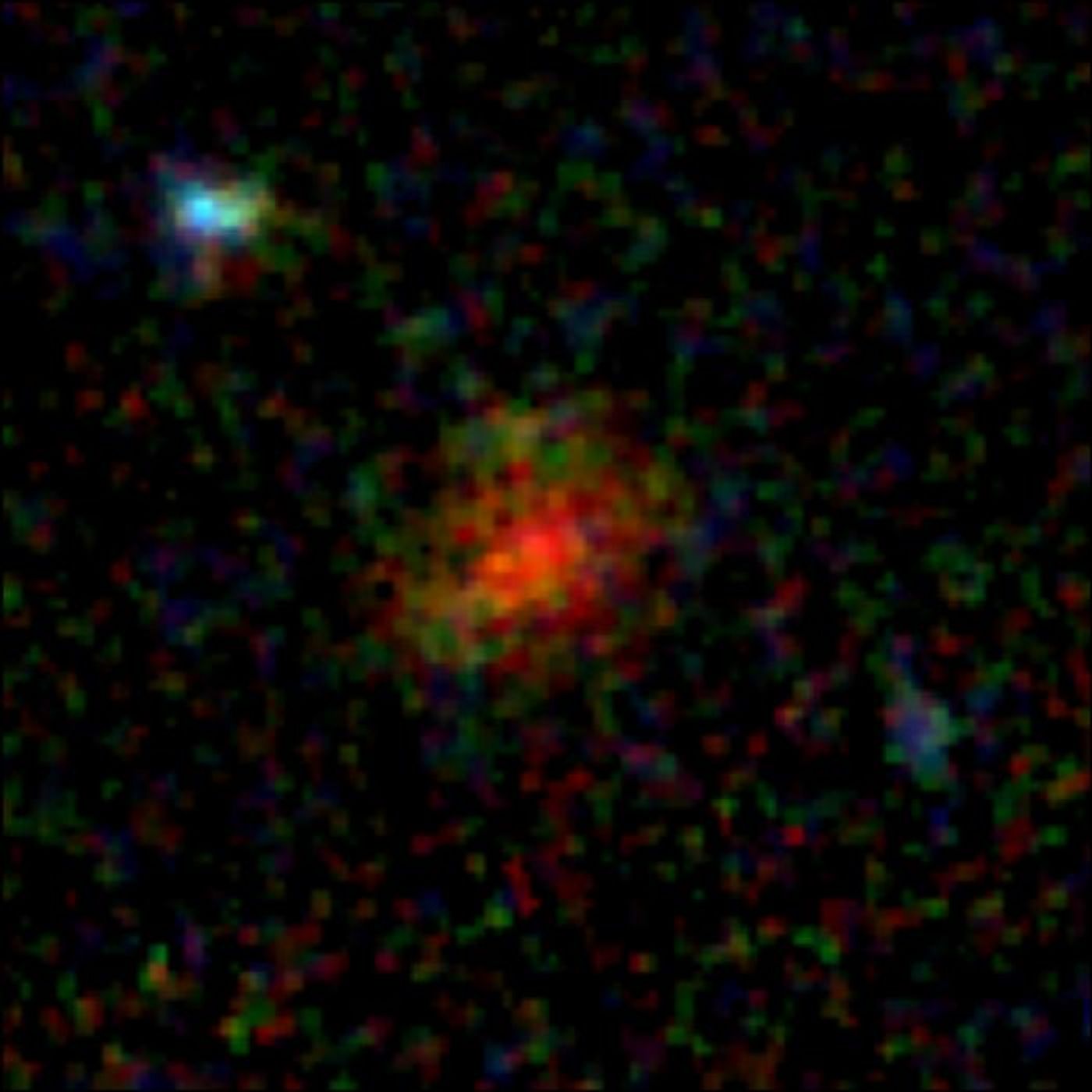AzTECC71: The Faint Galaxy That Defies Optical Detection
Did galaxies produce stars in the early universe? This is what a recent study published in The Astrophysical Journal hopes to unveil as a team of international researchers analyze data from NASA’s James Webb Space Telescope (JWST) about a star-forming galaxy called AzTECC71 that existed approximately 900 million years after the Big Bang. What makes this discovery unique is that AzTECC71 is hidden behind a fair amount of dust which initially fooled astronomers to hypothesize that it’s not very big. How astronomers now hypothesize that AzTECC71 was producing a plethora of new stars despite its young age, which challenges previous notions of the formation and evolution of galaxies so soon after the Big Bang.
Color composite image of the galaxy, AzTECC71, which astronomers estimate existed approximately 900 million years after the Big Bang. This image was made using multiple color filters as part of the James Webb Space Telescope’s NIRCam instrument. (Credit: J. McKinney/M. Franco/C. Casey/University of Texas at Austin)
“This thing is a real monster,” said Dr. Jed McKinney, who is a postdoctoral researcher at The University of Texas at Austin and lead author of the study. “Even though it looks like a little blob, it’s actually forming hundreds of new stars every year. And the fact that even something that extreme is barely visible in the most sensitive imaging from our newest telescope is so exciting to me. It’s potentially telling us there’s a whole population of galaxies that have been hiding from us.”
This discovery came as part of the COSMOS-Web project, which consists of more than 50 researchers with goal is to investigate some of the earliest formations of the universe. Dusty galaxies like AzTECC71 were almost impossible to study without infrared capabilities, but the combination of ground-based infrared telescopes and JWST’s powerful infrared instruments are allowing astronomers to observe what’s behind the dust for the first time.
Prior to the recent JWST observations, AzTECC71 was first identified using the James Clerk Maxwell Telescope in Hawaii, but despite the telescope’s powerful instruments, AzTECC71 only appeared as a blob of dust. The team conducted follow-up observations and were able to locate the origin of AzTECC71 using the ALMA Telescope in Chile, but it was JWST that finally revealed AzTECC71 for what it was: a star-producing galaxy that existed approximately 900 million years after the Big Bang.
Dr. McKinney noted, “With JWST, we can study for the first time the optical and infrared properties of this heavily dust-obscured, hidden population of galaxies because it’s so sensitive that not only can it stare back into the farthest reaches of the universe, but it can also pierce the thickest of dusty veils.”
Going forward, the team hopes to reveal more of these dusty galaxies using JWST.
What new discoveries will astronomers make about galaxies in the early universe in the coming years and decades? Only time will tell, and this is why we science!
As always, keep doing science & keep looking up!
Sources: The Astrophysical Journal, NASA, NASA (1), EurekAlert!, California Institute of Technology, East Asian Observatory, ALMA Observatory









